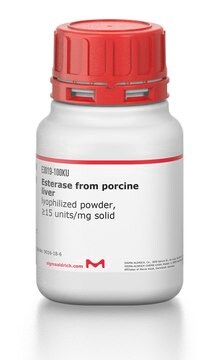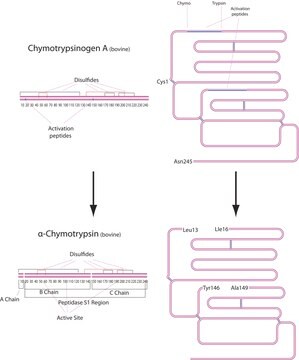C8118
Chymase human
recombinant, expressed in Pichia pastoris
Synonyme(s) :
Mast cell protease I
About This Item
Produits recommandés
Produit recombinant
expressed in Pichia pastoris
Niveau de qualité
Forme
liquid
Activité spécifique
≥40 units/mg protein
Poids mol.
~37 kDa by SDS-PAGE
Concentration
125-400 μg/mL
Numéro d'accès UniProt
Application(s)
diagnostic assay manufacturing
Conditions d'expédition
dry ice
Température de stockage
−20°C
Informations sur le gène
human ... CMA1(1215)
Vous recherchez des produits similaires ? Visite Guide de comparaison des produits
Catégories apparentées
Application
Actions biochimiques/physiologiques
Propriétés physiques
Définition de l'unité
Forme physique
Code de la classe de stockage
10 - Combustible liquids
Classe de danger pour l'eau (WGK)
WGK 1
Point d'éclair (°F)
Not applicable
Point d'éclair (°C)
Not applicable
Équipement de protection individuelle
Eyeshields, Gloves, multi-purpose combination respirator cartridge (US)
Faites votre choix parmi les versions les plus récentes :
Déjà en possession de ce produit ?
Retrouvez la documentation relative aux produits que vous avez récemment achetés dans la Bibliothèque de documents.
Notre équipe de scientifiques dispose d'une expérience dans tous les secteurs de la recherche, notamment en sciences de la vie, science des matériaux, synthèse chimique, chromatographie, analyse et dans de nombreux autres domaines..
Contacter notre Service technique


